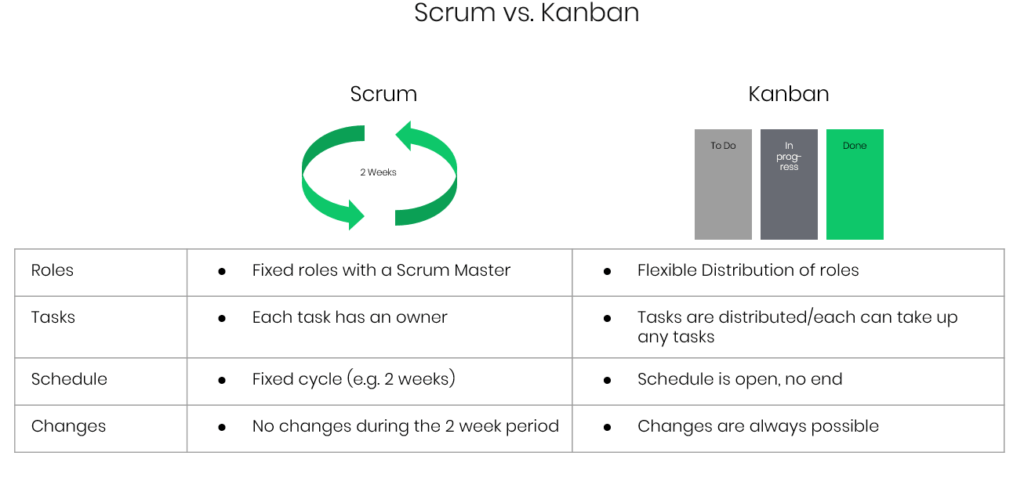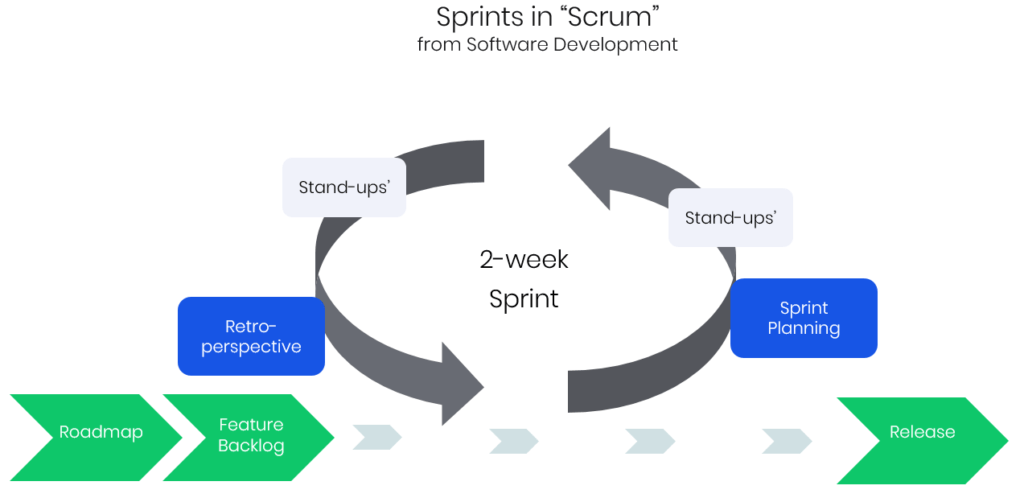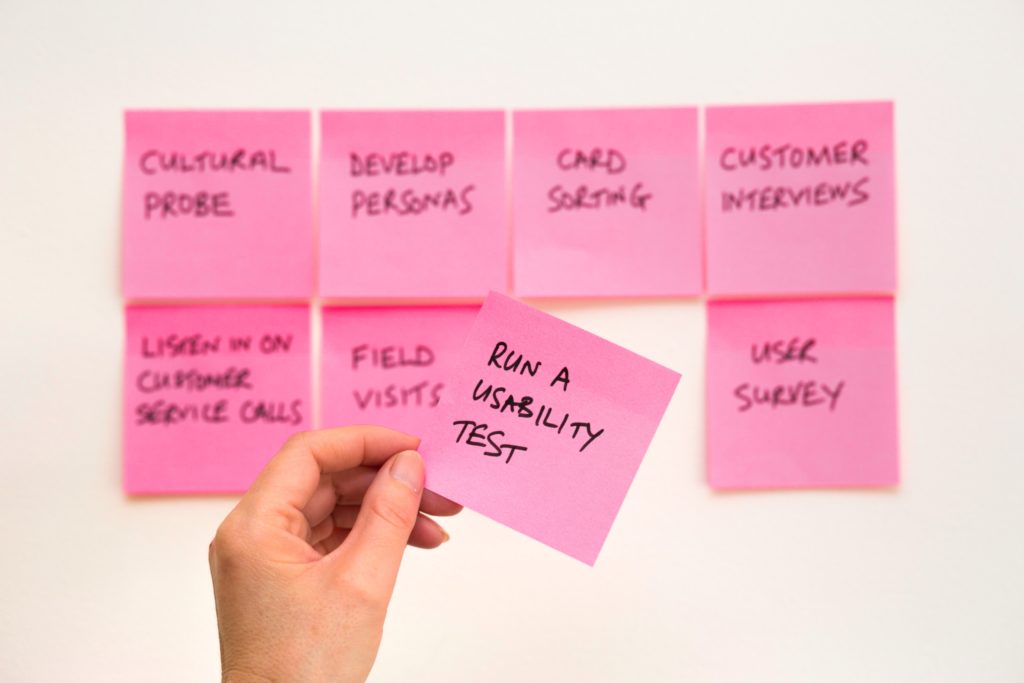Recently businesses faced an extremely unexpected change in the organization of work – suddenly everything is online, and there is an urgent need to find a way to continue working remotely. But how?
Moving to a digital work environment can be very challenging, especially if you need to lead the team.
How to make sure you organize your team efficiently even in times of uncertainty?

Nexoya has been using agile working methodology with sprints in its marketing team for more than a year and already achieved great results and higher efficiency in this period.
This article is based on the webinar which nexoya has recently held. In this summary, we will share with you tips on how agile organizational methodologies can be used in marketing, what could be challenging and why this form of organization is ideal for remote work. Moreover, we share our insights on how by introducing this methodology your marketing team can become more efficient and better coordinated.
What are the forms of agile organization?
An agile organization is a project organization, which can quickly respond to unexpected changes, opportunities, and events in the marketplace or environment. Such type of organization enables swarm intelligence.
The most popular methodologies of agile organizations are Kanban and Scrum.
Both Scrum and Kanban are iterative work systems that are based on process flows and aim to decrease waste and increase effectivity.
In this picture, you can see the main distinctions between these two methods.

As you can see, Scrum implies more structure: fixed roles, tasks as well as cycle duration. One cycle in SCRUM is called Sprint. In this example, one sprint lasts for two weeks.
According to the Scrum guide, the sprint length should be limited to one calendar month, in other words, four weeks. While the minimum sprint duration is considered to be one week.
As you can notice, Kanban, on the opposite, is a quite flexible work system. The roles and tasks can be easily distributed. There is no schedule defined. Moreover, Kanban methodology allows making changes at any time.
Kanban methodology helps to easily visualize workflow by dividing the work process into smaller steps. For example, the simplest Kanban board has three main columns:
- To do (tasks that need to be done)
- Work in progress (WIP) (tasks that are already in progress)
- Done (accomplished tasks)
Depending on your organization you can also add more columns such as, “review”, “pending”, and etc.
Implementation of Kanban methodology helps managers to easily track the working process and faster detect any bottlenecks within the system.
Let’s have a closer look at the Scrum framework.
Key elements of Scrum methodology
Scrum methodology introduces three main elements: Planning, Daily Scrum (or Standup), and Retrospective.

1. Planning
The main goal of this stage is to plan the next Sprint (two-four weeks).
The agenda for Scrum Planning:
- Check the availability of each team member for next Sprint (h/days per person)
- Business plan presentation
- Backlog / Planning: distribution of tasks amongst team members (depending on the availability)
The backlog is a prepared list of tasks that the employees have seen in the “Preplanning” (prepared by the Marketing Manager or “Product Manager”).
2. Standup (or daily Scrum)
Daily Scrum is a 15-minutes long event where everyone from your team briefly shares what was done in the last 24 hours, what is a plan for the upcoming day, and what are the blockers.
It is crucial to hold standup every day at the same time at the same place. It requires the participation of the whole team.
Agenda for the Daily Standup:
- General Info: for example, general news, achievements, important announcements
- What was accomplished yesterday
- Plans for the upcoming today
- Blockers
3. Retrospective
Last but not least, after every Sprint it is important to reflect on the achieved results and address the issues that took place during the Sprint.
It, mainly, has to main objectives:
- to celebrate what has been accomplished in the last Sprint
- discover system errors, get feedback & optimize
The procedure:
- Official Part (Updates)
- Anonymous part: providing feedback (give 5 min time, then go through)
Transformation to an agile & remote marketing team

Here are the main tips on how to implement agile methodology into your work:
- Providing a clear structure
Scrum framework requires strong management discipline that can be also achieved with the assistance of a Scrum Master. Therefore, it is very crucial to provide a clear and specific structure.
- Organized & clear communication
It is important to clarify:
- How the communication is organized (e.g. stand-up, fixed time and place)
- How work and processes are organized. It is normal if it takes some time for the team to adjust to a new approach.
- Management by results
As a matter of fact, the key to a successful and efficient work organization is a clear focus on “getting better”: which means constant analysis and improvement.
- Build confidence
Without a doubt, management plays a significant role in any organization. Especially it concerns distributed teams, where Face-to-Face meetings (F2F) via video chat is more important than ever.
Hence, it is important to regularly keep in touch with your team. Celebrate “small wins” together with your team (new customer, task completed, demos at closing, etc.).
- Team spirit
Very often remote work implies a certain level of isolation: team members are feeling “isolated” from each other. Therefore, informal meetings or chats are extremely important: for example, “random” chat in your workspace, cooking chat, or a “virtual beer/lunch” meeting.
It is important to understand that the transformation process can take some time and the anticipated results may not be achieved in a month or two. On average, it can take around three-four months to tailor this approach of working to your team and start seeing the desirable outcome.
Benefits of agile methodology implementation

Without a doubt, agile methodology has plenty of advantages, amongst which are:
- Provision of a clear picture, an overview of all tasks
- Transparent allocation of tasks
- Accountability increases
- Own initiative increases
- Higher efficiency
- Agile simplifies “Remote” work extremely
According to the latest State of Agile Marketing report, 74% of marketers who work agile declare high job satisfaction in comparison with 58% of marketers who continue working traditionally.
Useful tools for working agile
In addition, we prepared a list of useful tools that will help you organize your work more efficiently while using agile methodology:
- Whereby: for organizing online meetings
- Gitlab, Asana: for Project Management and Scrum board
- Slack: for internal communication with your colleagues
- Funretro: for doing a fun retrospective
- Miro: remote “Whiteboard”
Although the implementation of Agile methodology can be challenging and can take some time before you see the desired outcome, these challenges should not stop you from taking a step forward to the development of your work organization.
Learn more about Campaign Optimization and tips on how to boost your Facebook Ad performance!